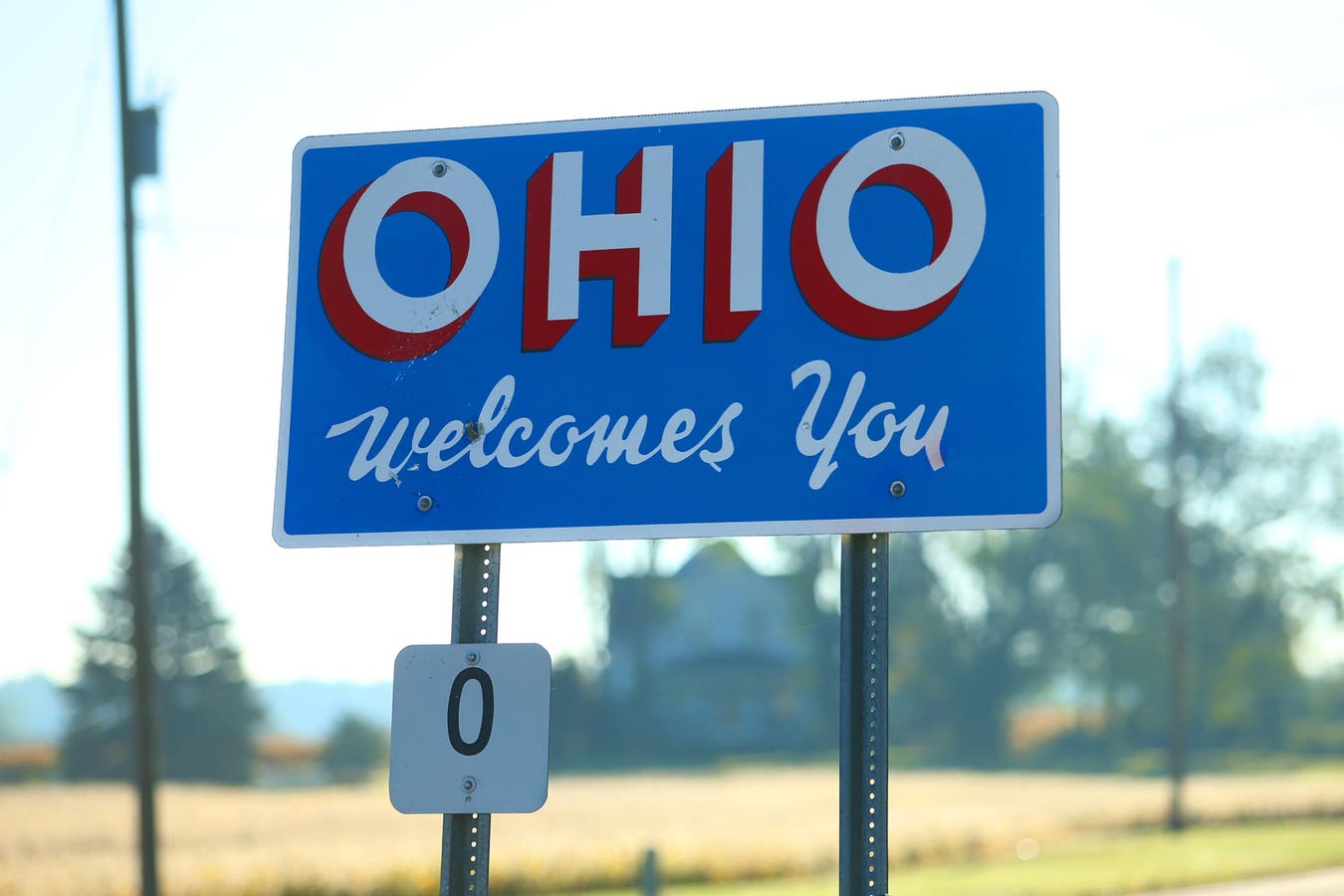Welcome to Ohio sign along a rural farm road at the Ohio/Michigan state line.
getty
There’s an interesting wrinkle in international business stateside involving a facility in Lordstown, Ohio, and big changes for production there. Tech media are noting this week that Hon Hai, affiliated with Foxconn, is selling the factory to a company called Crescent Dune LLC, but that this transfer in ownership is a trade in name only. Reports at Bloomberg and elsewhere indicate the plant will be used to make AI servers for clients like Nvidia and Apple.
Here’s how it’s explained in a release at Outlook Business that appears to have been written by AI, and “curated” by someone named Shashank Bhatt:
“Under the transaction, closed with Crescent Dune LLC, Foxconn transfers ownership of the land and equipment but will continue to operate on site under a long-term occupancy agreement, according to US Securities and Exchange Commission filings and a company statement.”
The sourcing also shows the deal was for $375 million for a plant totaling around 3 million square feet.
Foxconn bought the plant as recently as 2022 from Lordstown Motors, which had previously bought it from GM in 2019. So the timeline would be as follows:
- GM: until 2019, vehicle manufacturing
- Lordstown Motors: 2019-2022
- Foxconn/Hon Hai: 2022-current
Reports also show that Foxconn had intended to manufacture the Fisker Pear there prior to Fisker’s bankruptcy.
Basically, the site had a checkered past involving obstacles to the production of various EV models under multiple brands.
Monarch Tractors
Case in point: a few years ago, a local news affiliate covered the unveiling of a project where the Lordstown plant would manufacture a model of electric tractor owned by the Monarch brand. Business leaders spoke about the promise of this project, and showed off a prototype.
But how many tractors did they build?
I did some digging: it turns out that the best numbers only indicate an unknown number of Monarch tractors produced in Lordstown from 5 to 500.
Many of us have been warned not to simply use ChatGPT to get such stats, so after reading the model’s response, I found the relevant sources.
A press release early in the project showed five units built and shipped.
The other source is a TechCrunch article from Nov. 2024 that specified 500 tractors had been built. However, that number is shared between the Lordstown facility and a California location.
You can see here how modern investigation works: we can only get the numbers that are public, where the best guess is that they build a couple of hundred Monarch tractors at the plant, which is now pivoting to AI server production. The TechCrunch piece further reveals 35 layoffs and quick restructuring, which now makes sense, given there will not be any EVs rolling off the assembly line there anytime soon.
Future Plans
Going back to the above-quoted article, we have this:
“By offloading real estate and heavy-asset ownership to Crescent Dune, Foxconn can reallocate capital towards faster-growing technology segments while retaining operational control. The transaction also mitigates the financial drag of the underperforming EV project and preserves jobs at the Ohio site, which currently employs several hundred workers.”
There’s also bigger-picture analysis:
“Foxconn’s strategic realignment underscores a broader industry trend: manufacturers shifting from electric-vehicle initiatives, often capital-intensive with uncertain returns, to the more predictable, high-margin business of AI hardware assembly.”
As for the AI server business, this makes a lot of sense, given Nvidia’s recent breakthrough of the $4 trillion mark in terms of market cap. More predictable returns, indeed.
Cases like this show where the market is going and how this impacts geopolitical calculus involving the chip trade.
“One of few good points to arise from the global pandemic is that it has spurred a national push to strengthen the domestic supply chain, especially for essential products,” wrote an editorial team at the Ohio Tribune Chronicle in 2021, specifically citing the Lordstown facility and Foxconn’s planned operations. “Studies show job announcements for reshoring — the process of returning production and manufacturing of goods back to the company’s original country — are growing. In fact, the number of companies reporting new reshoring and foreign direct investment in the U.S. are at more than 1,800 this year. According to a report released in September by Reshoring Initiative, a U.S.-based initiative that promotes reshoring and provides tools and support for companies evaluating locations, Ohio ranks No. 1 so far this year in reshoring announcements, with 37 companies totaling 12,423 jobs.”
Presumably, many would say the same about this new project. It will still involve production in the U.S. and investment by the Chinese mega-firm: it’s just that a third party will technically own the building and the equipment.
But this kind of story also shows how hard it can be to break down the facts on a timeline for a particular business location.
Keep your eyes peeled as AI continues to impact international trade in a big way.









